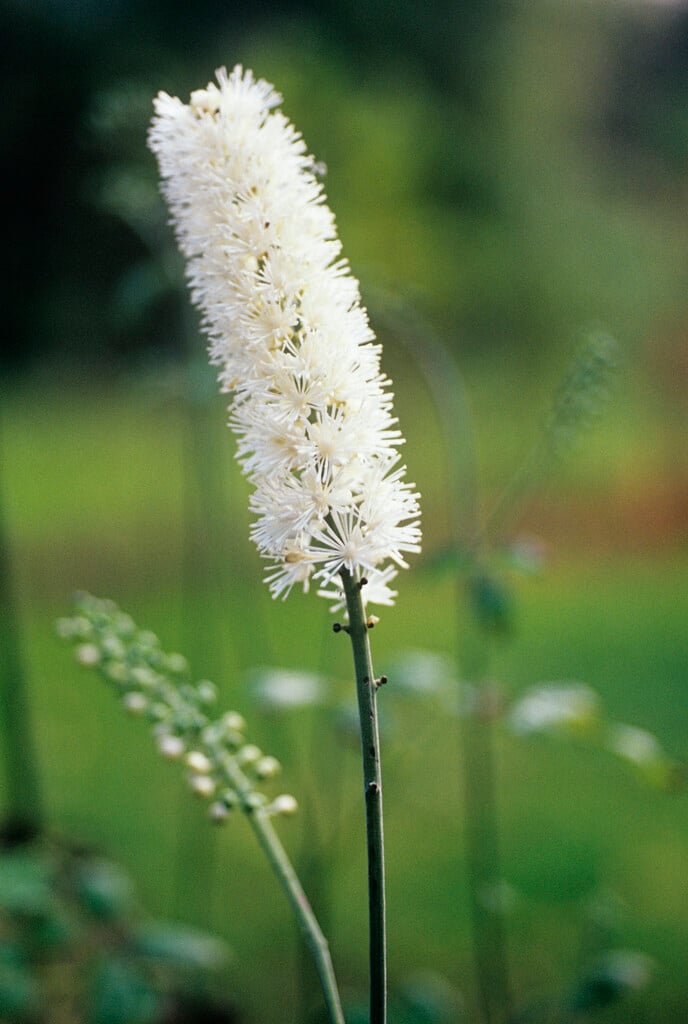Actaea racemosa
cohosh bugbane
A perennial to 1.5m, with long, branched, bottlebrush-like racemes of small, white flowers carried well above the bright green, divided leaves, and followed by dry brown follicles
Other common names
black snakerootblack cohosh
see morebugbane
deerweed
feather wands
rattleroot
rattlesnake weed
rattleweed
summer rockets
swan's neck
Virginia snakeroot
Synonyms
Cimicifuga racemosa var. racemosaCimicifuga racemosa
Size
Ultimate height
1–1.5 metresTime to ultimate height
2–5 yearsUltimate spread
0.1–0.5 metresGrowing conditions
Moisture
Moist but well–drained, Poorly–drainedpH
Acid, Alkaline, NeutralColour & scent
| Stem | Flower | Foliage | Fruit | |
| Spring | Green | |||
|---|---|---|---|---|
| Summer | White | Green | ||
| Autumn | Green | Brown | ||
| Winter |
Position
- Partial shade
Aspect
West–facing or North–facing or East–facing
Exposure
Sheltered Hardiness
H7Botanical details
- Family
- Ranunculaceae
- Native to GB / Ireland
- No
- Foliage
- Deciduous
- Habit
- Clump forming
- Potentially harmful
- Harmful if eaten. Wear gloves and other protective equipment when handling
- Genus
Actaea are rhizomatous herbaceous perennials with compound leaves and small creamy-white flowers in short, erect, simple or branched terminal racemes, followed either by poisonous red, black or white berries, or by star-shaped clustered brown follicles
- Name status
Correct
- Plant range
- E North America
How to grow
Cultivation
Grow in cool, moist, moderately fertile soil, enriched with organic matter. Water thoroughly in dry weather.
Propagation
Propagate by seed sown in pots in a cold frame in autumn or by division in early spring
Suggested planting locations and garden types
- Wildflower meadow
- Cottage and informal garden
- Flower borders and beds
Pruning
Cut back after flowering or fruiting
Pests
Generally pest-free
Diseases
Generally disease-free
Get involved
The Royal Horticultural Society is the UK’s leading gardening charity. We aim to enrich everyone’s life through plants, and make the UK a greener and more beautiful place.
